- Home |
- About |
- Contact Us |
- Privacy |
- Newsletter |
- Shop |
- Donate
Roman Numeral Translation
Calculator
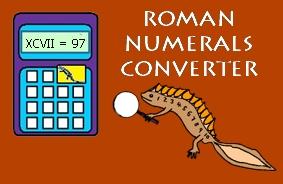
Welcome to our Roman Numeral Translation Calculator.
This calculator will convert from Roman numerals to the decimal (base-10) number system or from the decimal number system into Roman numerals.
Our converter will also show you detailed working out so you can create your own worked examples!
Roman Numeral Translation Calculator
How To Use our Converter
Here is our Roman numeral translation calculator which will help you to convert roman numerals to decimal and decimal to roman numerals.
Our roman numeral translation calculator will also show you the formula and working out you need to convert between the two systems.
This convert will convert numbers up to six digits into Roman numerals.
Roman numeral translation calculator: How It Works...
Step 1) Choose which calculator you want - roman to decimal or decimal to roman
Step 2) Type in the number you want to convert.
Step 3) Click the Convert button and the answer will be displayed.
Roman Numeral Values
There are just 7 Roman numerals: I, V, X, L, C, D and M.
Unlike most other number systems, the numerals can only be used in particular sequences.
Another rule is that apart from M, you can only have a maximum of 3 of any given numeral in a row.
Here is a quick overview of the 7 Roman numerals and what each is worth.
| Roman Numerals | Value |
|---|---|
| I | 1 |
| V | 5 |
| X | 10 |
| L | 50 |
| C | 100 |
| D | 500 |
| M | 1000 |
We can also use an overline with each Roman numeral which has the effect of multiplying the value by 1000, so:
| Roman Numerals | Value |
|---|---|
| V | 5,000 |
| X | 10,000 |
| L | 50,000 |
| C | 100,000 |
| D | 500,000 |
| M | 1,000,000 |
So XLMM would represent 42,000.
Different representations
Numbers over 4,000 can be written in different ways in Roman numerals:
The number 4,000 can be written:
- MV
- MMMM
- IV
Our translator uses the format of the first example, so 4000 is represented by MV
Roman Numeral Translation Quick Table
This quick conversion table shows you some common roman number to decimal number conversions.
| Number | Roman Numerals |
|---|---|
| 1 | I |
| 2 | II |
| 3 | III |
| 4 | IV |
| 5 | V |
| 6 | VI |
| 7 | VII |
| 8 | VIII |
| 9 | IX |
| 10 | X |
| 11 | XI |
| 12 | XII |
| 13 | XIII |
| 14 | XIV |
| 15 | XV |
| 16 | XVI |
| 17 | XVII |
| 18 | XVIII |
| 19 | XIX |
| 20 | XX |
| Number | Roman Numerals |
|---|---|
| 10 | X |
| 20 | XX |
| 30 | XXX |
| 40 | XL |
| 50 | L |
| 60 | LX |
| 70 | LXX |
| 80 | LXXX |
| 90 | XC |
| 100 | C |
| 200 | CC |
| 300 | CCC |
| 400 | CD |
| 500 | D |
| 600 | DC |
| 700 | DCC |
| 800 | DCCC |
| 900 | CM |
| 1000 | M |
| 2000 | MM |
We have some more detailed Roman Numeral Lists, including printable sets below.
Roman Numeral Translation
How to convert from Roman to decimal
To convert a Roman number to the decimal (base-10) number system, we need to group the Roman numerals into their values and then add them together.
One thing to remember when doing Roman numeral translation is that the Roman numbers usually go from bigger to smaller.
However, if a smaller value Roman numeral (I, X or C) comes before a larger value then it is subtracted from the larger numeral.
This gives us two simple rules for roman numeral translation:
- When a smaller value numeral comes AFTER a larger value numeral it is ADDED
- But if a smaller value numeral comes BEFORE a larger value numeral it is SUBTRACTED!
There are 6 different possibilities for when then smaller numeral comes BEFORE the larger value, namely:
- IV = 4
- IX = 9
- XL = 40
- XC = 90
- CD = 400
- CM = 900
An example is that C has the value 100 and X has the value 10.
- CX is worth 100 + 10 = 110, BUT
- XC is worth 100 - 10 = 90 because the X comes before the C.
Convert Roman numerals to Decimal Worked Examples
Example 1) What is XXIV as a number?
Step 1) Split up the Roman numerals into their values.
XXIV = X X IV
The IV has been written as one value because the I comes before the larger value V.
Step 2) Write down the values of each part.
X X IV = 10 + 10 + 4
Step 3) Add them up.
10 + 10 + 4 = 24
So XXIV is equal to 24 as a number.
Example 2) Write CDLXXVI as a number.
Step 1) Split up the Roman numerals into their values.
CDLXXVI = CD L X X V I
The CD has been written as one value because C (100) comes before the larger value D (500).
Step 2) Write down the values of each part.
CD L X X V I = 400 + 50 + 10 + 10 + 5 + 1
Step 3) Add them up.
400 + 50 + 10 + 10 + 5 + 1 = 476
So CDLXXVI is equal to 476 as a number.
Example 3) Write MCMXLVIII as a number.
Step 1) Split up the Roman numerals into their values.
MCMXLVIII = M CM XL V I I I
Step 2) Write down the values of each part.
M CM XL V I I I = 1000 + 900 + 40 + 5 + 1 + 1 + 1
Step 3) Add them up.
1000 + 900 + 40 + 5 + 1 + 1 + 1 = 1948
So MCMXLVIII is equal to 1948 as a number.
Convert Numbers to Roman Numerals
How to convert from numbers to Roman Numerals
To convert a decimal number (base-10) to the Roman number system, we need to change the decimal base-10 place value into Roman numerals representing their values.
The chart above can help to do this, or you can try your own worked examples below, on our Roman Numeral Translation calculator above.
Convert Numbers to Roman Numerals Worked Examples
Example 1) Convert 64 into Roman numerals.
Step 1) Look at what place values we have.
64 = 60 + 4
Step 2) Write each place value as Roman numerals.
- 60 is LX
- 4 is IV
Step 3) Put the numerals together.
So 64 = LX + IV or LXIV
So 64 is equal to LXIV in Roman numerals.
Example 2) Convert 397 into Roman numerals.
Step 1) Look at what place values we have.
397 = 300 + 90 + 7
Step 2) Write each place value as Roman numerals.
- 300 is CCC
- 90 is XC
- 7 is VII
Step 3) Put the numerals together.
So 397 = CCC + XC + VII or CCCXCVII
So 397 is equal to CCCXCVII in Roman numerals.
Example 3) Convert 3489 into Roman numerals.
Step 1) Look at what place values we have.
3489 = 3000 + 400 + 80 + 9
Step 2) Write each place value as Roman numerals.
- 3000 is MMM
- 400 is CD
- 80 is LXXX
- 9 is IX
Step 3) Put the numerals together.
So 3489 = MMM + CD + LXXX + IX or MMMCDLXXXIX
So 3489 is equal to MMMCDLXXXIX in Roman numerals.
More Roman Numerals Resources
Roman Numerals List
Our Roman Numeral lists can help you to quickly convert different numbers from Roman numerals to numbers.
The lists can also help you to spot patterns and understand how Roman numerals work.
We have a wide range of lists to help you with your Roman numeral conversion.
Roman Numerals Worksheets
We also have a collection of Roman numerals worksheets for helping to learn how to convert from Roman numerals to numbers.
Our worksheets cater for a range of abilites and have differing levels of support.
More Recommended Math Resources
Take a look at some more of our resources similar to our mm to inches conversion calculator.
Other Number System Converters
Our number system converters will convert numbers from binary, octal or hexadecimal into decimal (or from decimal to binary, octal or hex).
The calculators also show you detailed working out so you can see how to do it yourself!
Prime Number Calculators
Our prime number calculator will help you to find all the factors of any given number and tell you whether or not the number you are looking at is prime or not.
The calculator will also show you your number as a product of primes.
How to Print or Save these sheets 🖶
Need help with printing or saving?
Follow these 3 steps to get your worksheets printed perfectly!
How to Print or Save these sheets 🖶
Need help with printing or saving?
Follow these 3 steps to get your worksheets printed perfectly!
Subscribe to Math Salamanders News
Sign up for our newsletter and get free math support delivered to your inbox each month. Free seasonal math grab pack included.
Math-Salamanders.com
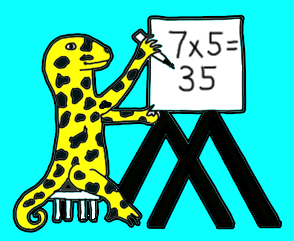
The Math Salamanders hope you enjoy using these free printable Math worksheets and all our other Math games and resources.
We welcome any comments about our site or worksheets on the Facebook comments box at the bottom of every page.

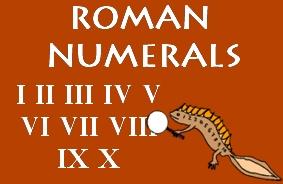
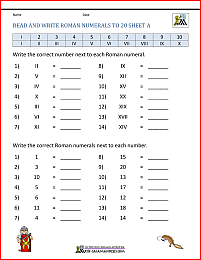
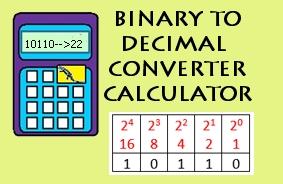
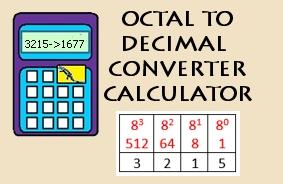
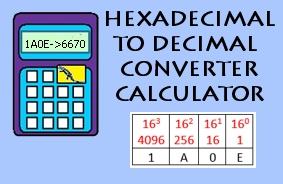
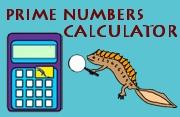

New! Comments
Have your say about the Math resources on this page! Leave me a comment in the box below.